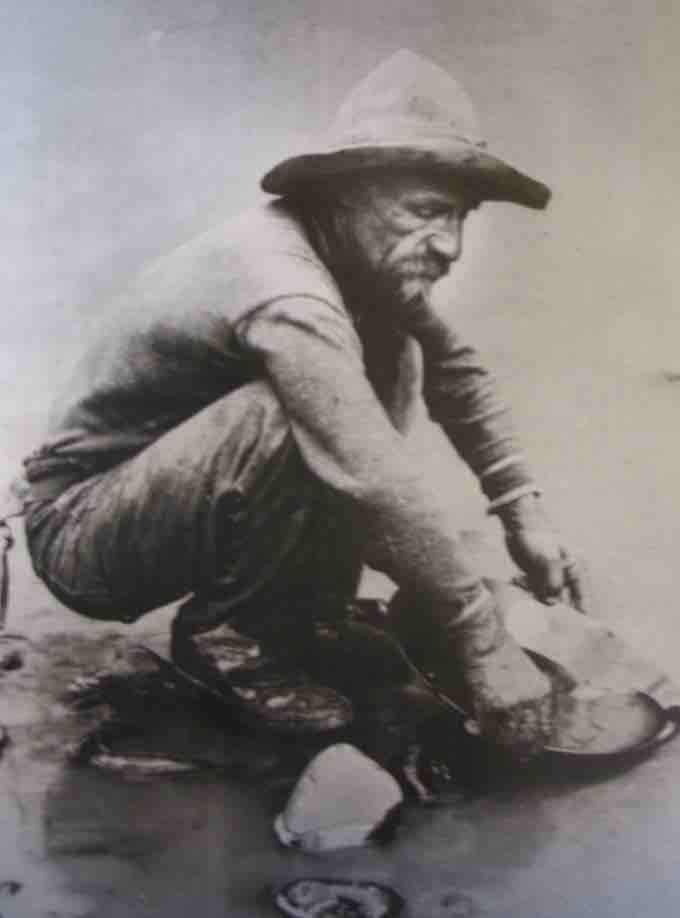Seeking Fortune in the West
The California Gold Rush began on January 24, 1848, when James W. Marshall found gold at Sutter's Mill in Coloma, California. The first people to hear confirmed information of the gold rush were in Oregon, the Sandwich Islands (Hawaii), and Latin America, and were the first to start flocking to the state in late 1848. The news of gold eventually brought some 300,000 people to California from the rest of the United States and abroad. Approximately half of those arrived by sea, while half came from the east overland on the California Trail and the Gila River Trail.
The gold-seekers, known as "forty-niners" (in reference to the year 1849), often faced substantial hardships on their trip. While most of the newly arrived were Americans, the Gold Rush attracted tens of thousands from Latin America, Europe, Australia, and China. At first, the gold nuggets could be picked up off the ground. Later, gold was recovered from streams and riverbeds using simple techniques, such as panning. More sophisticated methods were developed and later adopted elsewhere. At its peak, technological advances reached a point where significant financing was required, decreasing the ratio of individual miners to gold companies. Although $550 million worth of gold was found in California between 1849 and 1850, very little of it went to individuals. While it led to great wealth for a few, many returned home with little more than they had when they started.
Effects of the Gold Rush
The effects of the Gold Rush were substantial. As people flocked to California in 1849, the population of the new territory swelled from a few thousand to about 100,000. San Francisco grew from a small settlement of about 200 residents in 1846 to a boomtown of about 36,000 by 1852. Roads, churches, schools, and new towns were built throughout California. The new arrivals quickly organized themselves into communities, and the trappings of “civilized” life—stores, saloons, libraries, stagelines, and fraternal lodges—began to appear. Newspapers were established, and musicians, singers, and acting companies arrived to entertain the gold-seekers. In 1849 a state constitution was written, a governor and legislature chosen, and California became a state as part of the Compromise of 1850.
New methods of transportation developed as steamships came into regular service. By 1869, railroads were built across the country from California to the eastern United States. Agriculture and ranching expanded throughout the state to meet the needs of the settler-invaders. At the beginning of the Gold Rush, there was no law regarding property rights in the goldfields, and a system of "staking claims" was subsequently developed.
The Gold Rush also had significantly negative effects on American Indians in the area, who were attacked and pushed off their lands. Observers in the gold fields reported abuse of American Indians by miners. Some miners forced American Indians to work their claims for them, while others drove them off their lands, stole from them, and even murdered them. Non-Americans were generally disliked, especially those from South America. The most despised, however, were the thousands of Chinese migrants. Eager to earn money to send to their families in Hong Kong and southern China, they quickly earned a reputation as frugal men and hard workers who routinely took over diggings others had abandoned as worthless and worked them until every scrap of gold had been found. Many American miners, often spendthrifts, resented their presence and discriminated against them, believing the Chinese, who represented about 8% of the nearly 300,000 who arrived, were depriving them of the opportunity to make a living.

Forty-Niner
A forty-niner, so called because he came to California in 1849, pans for gold.